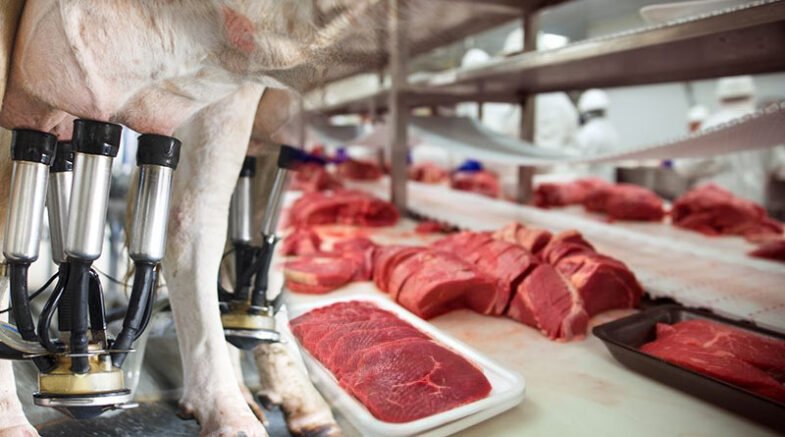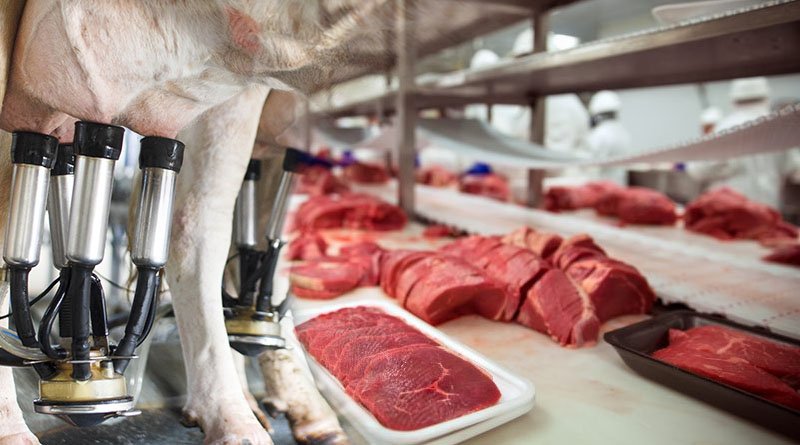The biggest problem for producers is the price swings, which makes it difficult for them to properly plan their investments and production.

Milk and pork are staples in many people’s diets, and their production and sale are profitable for both suppliers and buyers. However, both producers and consumers have been impacted by the recent price swings of milk and pork.
The biggest problem for producers is the price swings, which makes it difficult for them to properly plan their investments and production. This then occasionally makes price swings worse.
Additionally, urgent policy changes should be made to stabilize the price of both milk and pork because both groups of people rely heavily on it. Milk and pork prices have been falling nationwide, and some dairy and pig farms appear to be losing money, which has caused market panic.
The average price of live pigs in 30 provincial-level regions during the second week of January was 16.29 yuan ($2.41) per kilogram after falling for 11 straight weeks, and the average price of pork was 29.97 yuan per kg after falling for 10 weeks, according to the Ministry of Agriculture and Rural Affairs.
In ten major milk-producing provinces and regions, including Hebei and Shandong provinces and the Inner Mongolia autonomous region, during the same time period, the average price of milk was 4.11 yuan per kg, down 0.2% from the previous week and up 3.7% from the previous year.
Hebei authorities recently established a reference price for fresh milk at 4.10 yuan per kg, with the lowest price being 3.93 yuan per kg.
Due to an excess of milk, farmers were willing to sell it for less than the local government’s reference price, as evidenced by the farmers’ association members’ voluntary proposal to lower the minimum price to 3.85 yuan per kg.
Additionally, for the first quarter of 2023, the Shandong provincial government set the reference price for fresh milk at 3.85 to 4.10 yuan per kg. This demonstrates the serious production and marketing challenges the domestic dairy industry is currently facing.
The main issue with the rising pig supply at a time when consumer demand is weak is one of many factors contributing to the falling pork prices.
For instance, some large pig farms sped up their sales in December, increasing the sale of both early pigs and later-fattening commercial pigs. And according to data, production of live pigs rose by 7.3 percent annually and 18.3 percent monthly in December.
The lingering pandemic forced people to avoid group dining and business gatherings, and the demand for cured pork in South China has yet to pick up, all contributed to the decline in pork prices. China imported about 200,000 tonnes of pork in December, up 25% from October.
In contrast to the decline in pork prices, there has been a decline in milk prices due to both domestic and international factors.
Wild price swings make it challenging for consumers to plan the household budget and provide a healthy diet for the family at an affordable price.
People all over the world are consuming fewer milk products as a result of the COVID-19 pandemic and the slow pace of economic expansion, and many dairy farms have lowered their product prices to boost sales.
According to data, the cost of milk in China has been going down since it hit a record high of 4.38 yuan per kilogram in August 2021. The production costs (primarily forage grass and feed) have been increasing, which has worsened the situation for dairy farmers and reduced their profit margins on small and medium-sized dairy farms.
Additionally, the industry has been impacted by the economic issues brought on by the global monetary expansion because dairy cows have a protracted breeding cycle that may result in overproduction. The authorities should think about implementing the following actions to stabilize milk and pork prices and promote the growth of the dairy sector.
First, information-sharing mechanisms should be established and information asymmetry should be avoided using digital platforms. Because Chinese livestock and poultry departments have comprehensive market and production data, this is not a difficult task.
However, due to their lack of knowledge, many livestock farms, particularly small and medium-sized livestock farms (households), are unable to access crucial information on time. Therefore, related departments should think about using quick videos and official WeChat accounts to quickly spread information among livestock farmers.
Farmers will be able to plan their production in accordance with market changes and prepare in advance for emergencies with the help of proper information analysis and interpretation, industrial policy, and data.
Second, in order to lower transaction costs and stabilise supply chains, a benefit-sharing mechanism between processing businesses and livestock farms must be established. In order to better handle emergencies, the businesses and farmers might want to think about creating long-term cooperation contracts and benefit link mechanisms.
Third, the government should support private businesses, especially small and medium-sized farms, by providing loans, insurance, and other financial tools to help them withstand price shocks. When livestock prices fall below the cost of production, for instance, price insurance can be used to ensure the income of livestock producers.
To ensure smooth market operations, the government should use the reserves of milk powder and pork. For instance, the government may release pork or milk from its reserves when prices rise too much in order to safeguard the interests of consumers. Additionally, the government may buy these goods as reserves when prices drop too low.
